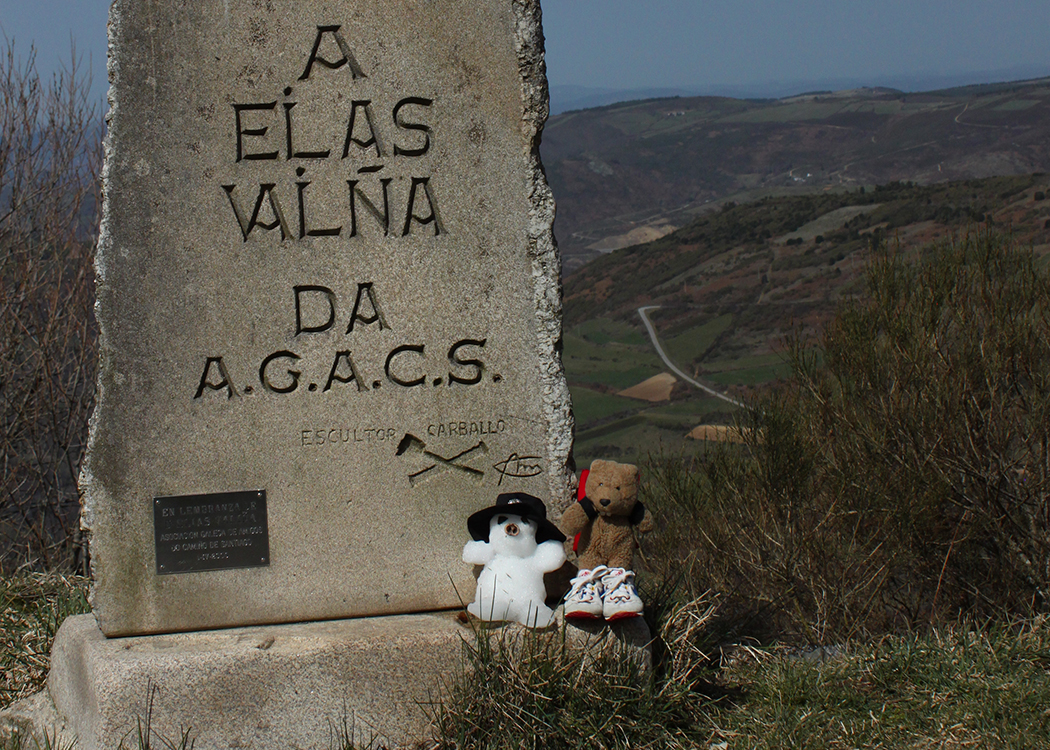 Previous Day |
Trabadelo → Fonfría 30.2 km (18.8 mi) |
 Next Day |
¡Subimos, amigos!
Today marks the last big climb of the Camino, up into Galicia and O Cebreiro! The guide warned me to dedicate at least three hours to the ascent, naming it the next most dangerous portion of the Camino after the Pyrenees. Full of adrenaline, I stepped out the albergue door into a cloudless morning and suddenly wasn’t so scared!
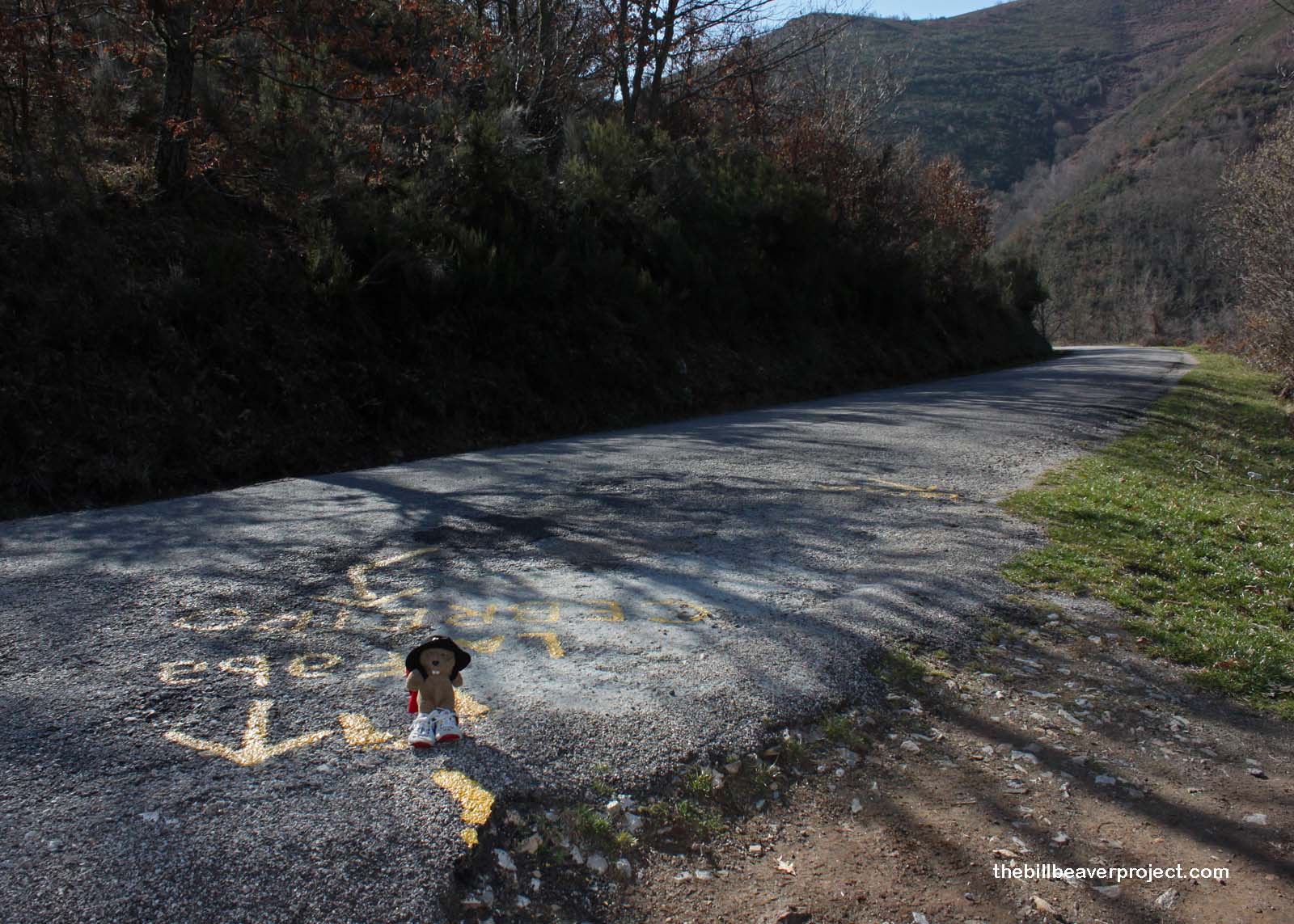 |
The route since Villafranca del Bierzo has been the most heavily vandalized section of the Camino so far. Most of the signs, barriers, and support columns have been covered in names and even full conversations! Don’t they realize that those messages will still be there after everyone they know has passed? Some businesses have joined the spray paint battle with advertising, prompting other peregrinos to add more paint advising a boycott of businesses that advertise on the Camino! It’s one huge mess that appears to have made a jump in 2010.
See, 2010 was a Holy Year for the Catholic Church, which means St. James’ Day (July 25th) falls on a Sunday. This last Holy Year brought over a quarter of a million peregrinos to the Camino, driven by books like Paul Coelho’s The Pilgrimage and Hape Kerkeling’s Ich Bin Dann Mal Weg! There was also a movie called The Way released in the USA in 2010, but I don’t know how much it contributed to the surge in peregrinos.
While the publicity did lead to the addition of a whole bunch of new albergues and the Museo de la Evolución Humana, it also meant a whole lot more pens, spray paint cans, and minds obsessed with leaving a mark. That’s the risk any travel writer takes in writing about places, which is why it is so important for travel writers to be aware of the impact of more people and to promote more harmless ways of leaving a mark, like taking a photo or writing your name in the snow or dirt!
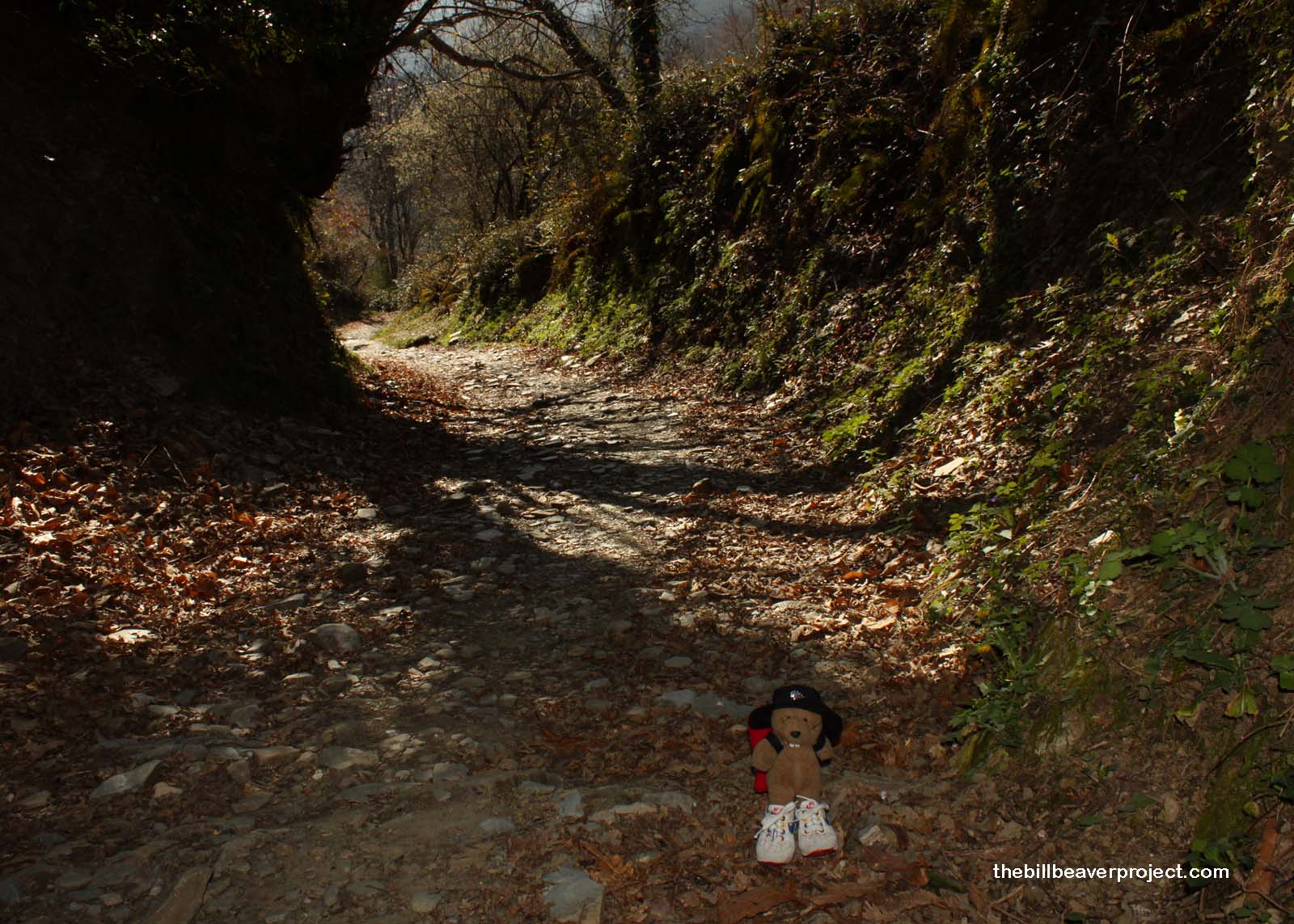 |
Some of the graffiti actually gave me a glimpse of local sentiment, particularly on the road signs, where L’s had been removed from articles, tildes had been added to N’s, and sometimes whole letters were altered! For instance, La Portela became A Portela and Herrerías became Ferrerías. This is the battle for the Galician language, which was heavily suppressed under Franco! While today, Galego is protected and even officially taught in schools where it is indigenous, the younger, more radical folks clearly want a complete curtail of Spanish influence!
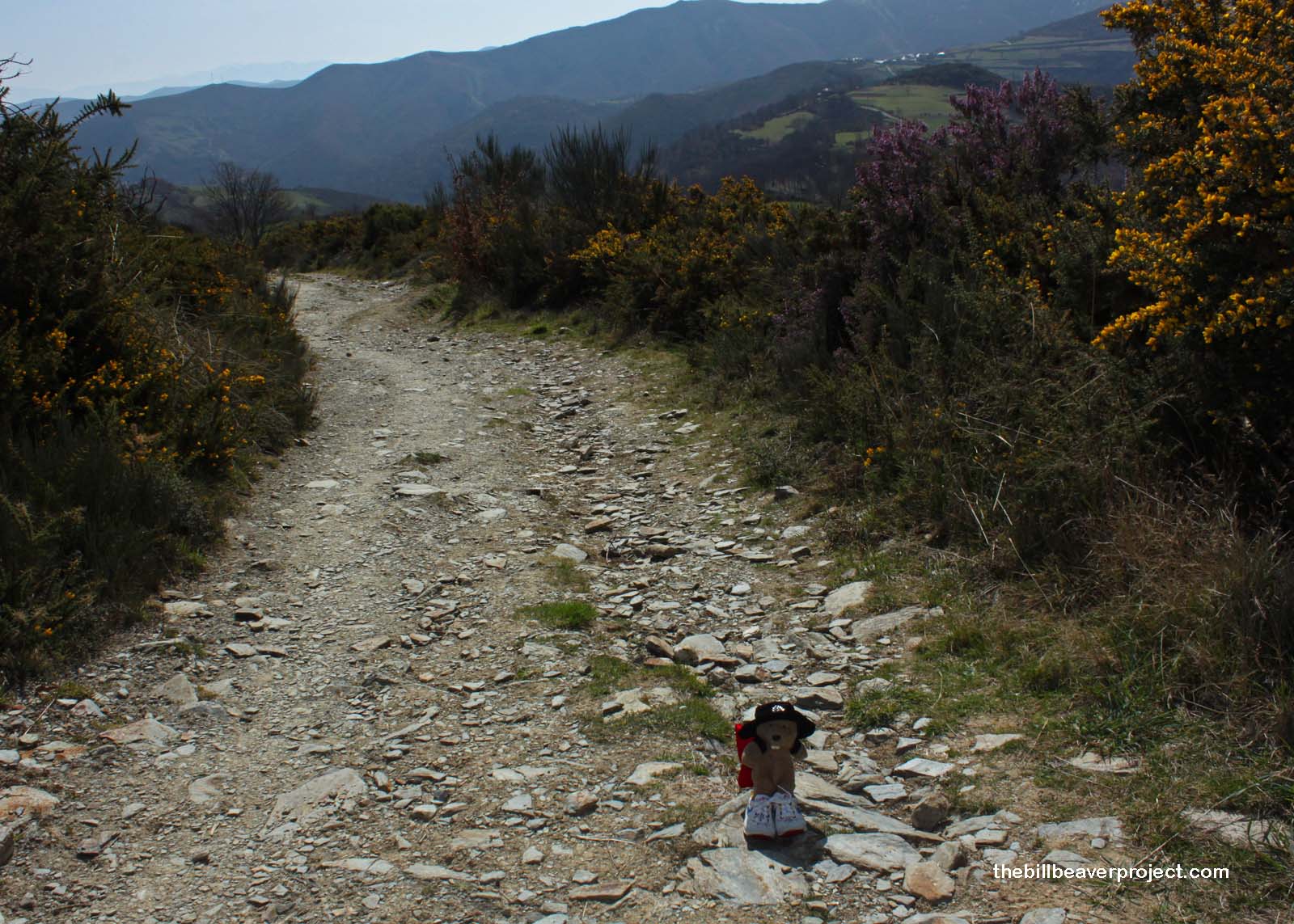 |
Not one to engage in border quarrels, I began the climb shortly after HFerrerías, playing Camino leapfrog with Gonzalo from last night! I won’t lie, that first 4K to La Faba was not easy, but after this first town, the path turned into a nice, gradual upgrade. I took a break with Gonzalo and admired the stunning view while he told me that many people in these villages spend the working week in the big cities and only return home on the weekends. That would explain why the towns have been so empty, but that must be tough on their families!
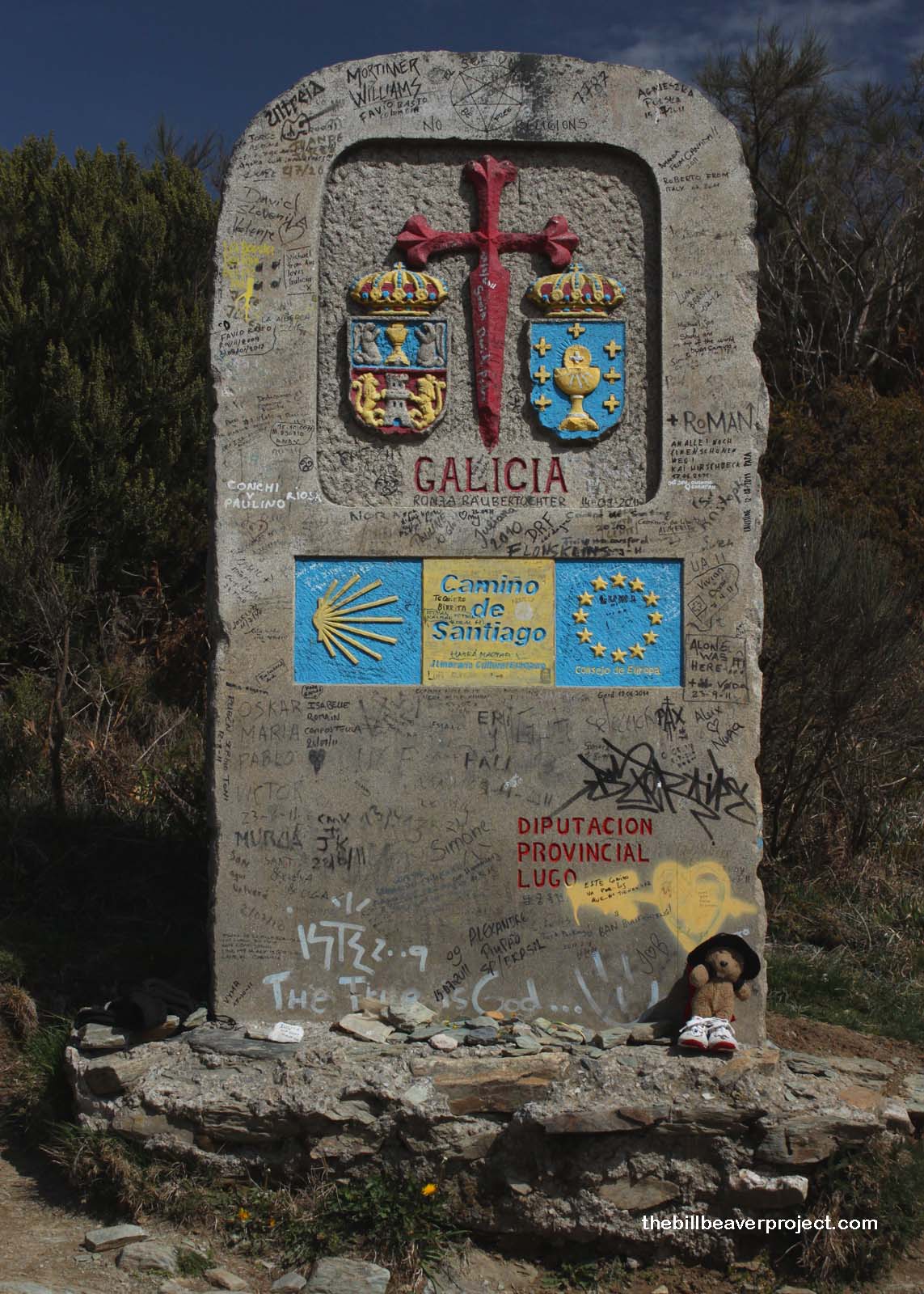 |
At last, I arrived at the border of Galicia, marked with a grand monument and the names of hundreds of people who had come before me. Galicia is most famous for having clung to its Celtic roots. While the Celts inhabited much of the Iberian peninsula since prehistoric times, Galicia in particular has really embraced its Celtic identity. You can see it in the change of scenery! Galicia gets a lot of rain, so it stays very green most of the year, and when you separate those green pastures with low, stone walls, it starts to look a lot like Ireland! Not only that, but a very popular instrument among the Galician people is the gaita, a type of bagpipe!
It was just such a gaita that, legend has it, brought a German Pilger, lost in the fog, to O Cebreiro, where he found the Holy Grail! That Holy Grail sure does get around! Allegedly, the Grail is still kept in the church of Santa María, but said Pre-Romanesque church was firmly closed, despite my and Gonzalo’s pleas for entry!
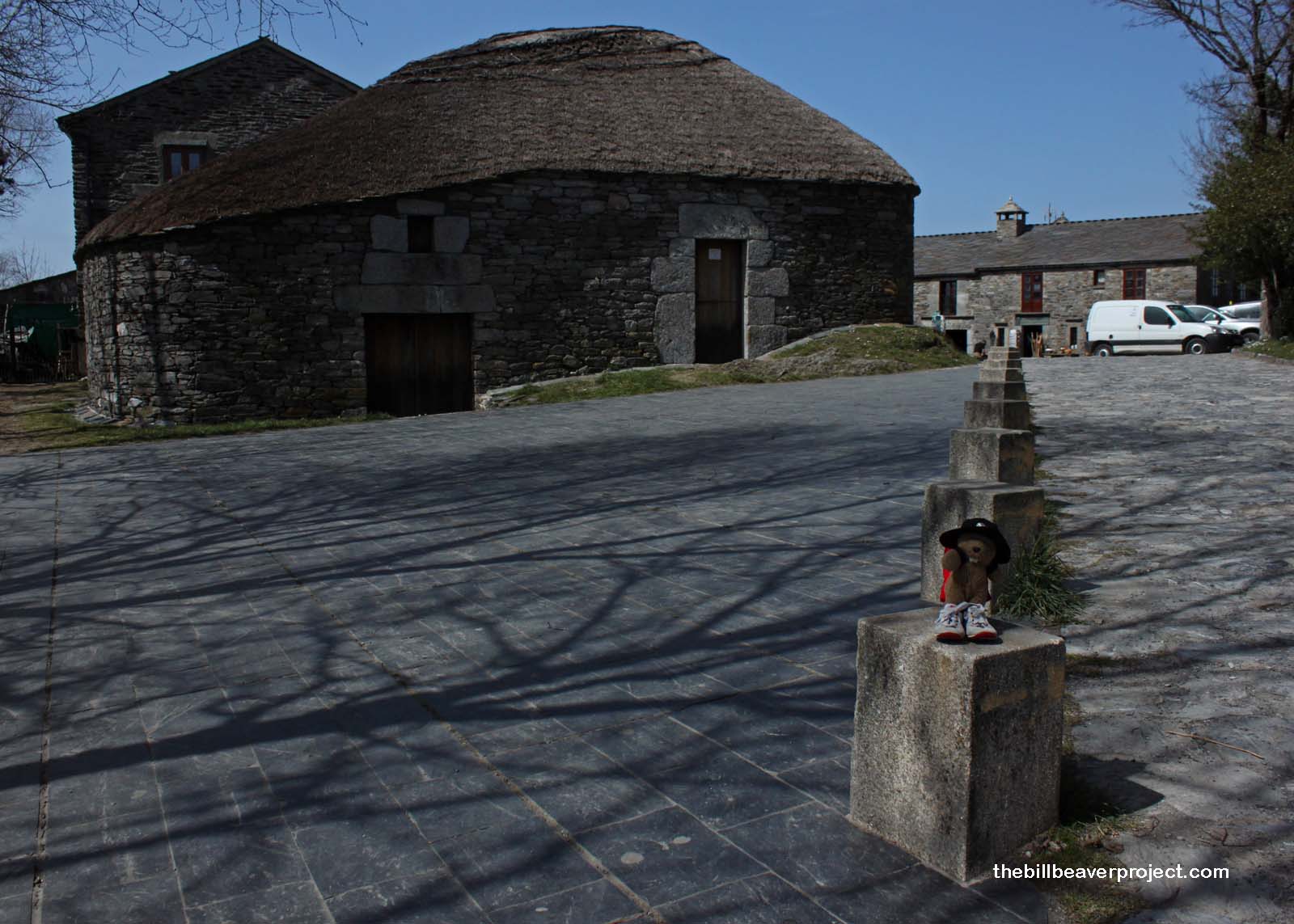 |
I tried the museum, built in a casa de teito or palloza, but it was also closed! Well, I at least got to admire the structures, which have been in use since the Iron Age. They are a subset of a larger group of dwellings called roundhouses, which can also be found in the UK and Ireland, as well as in Italy, though these latter trulli are not Celtic! These houses are specifically designed to keep the heat outside in the summer and inside in the winter. They were originally divided in two, with one half reserved for the people and the other for the livestock!
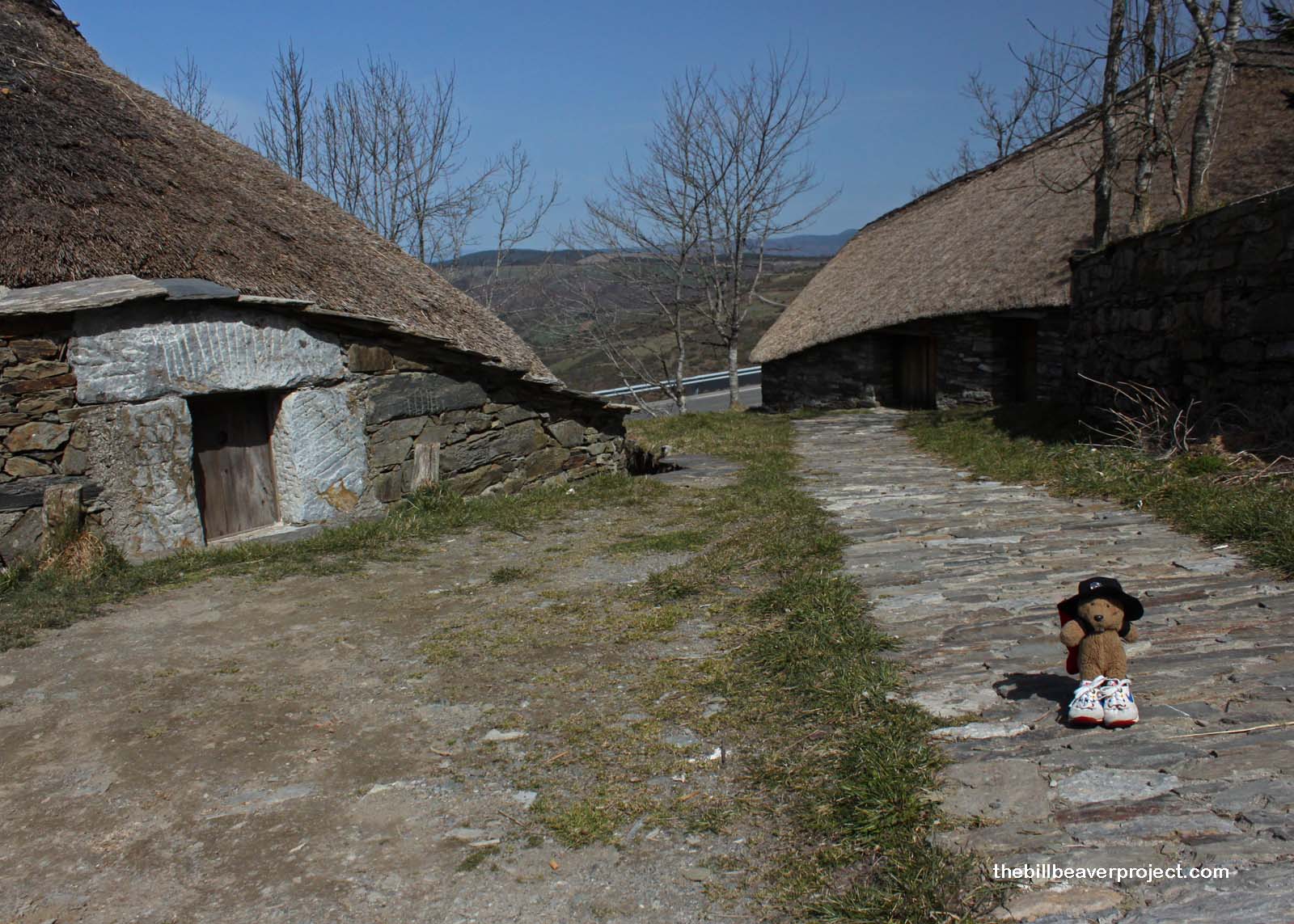 |
With both the church and museum closed, all that remained open were gift shops and restaurants, strange in a town that had been described as “impossibly quaint.” In fact, as I took in the manicured buildings and cobblestone streets, the pricey restaurants and plethora of gift shops, and the tour bus parking spaces, it dawned on me: O Cebreiro is the Disneyland of the Camino! I suddenly wasn’t sure this was where I wanted to spend the night, especially since Gonzalo was already moving on and the party-goers were catching up! What was I to do?
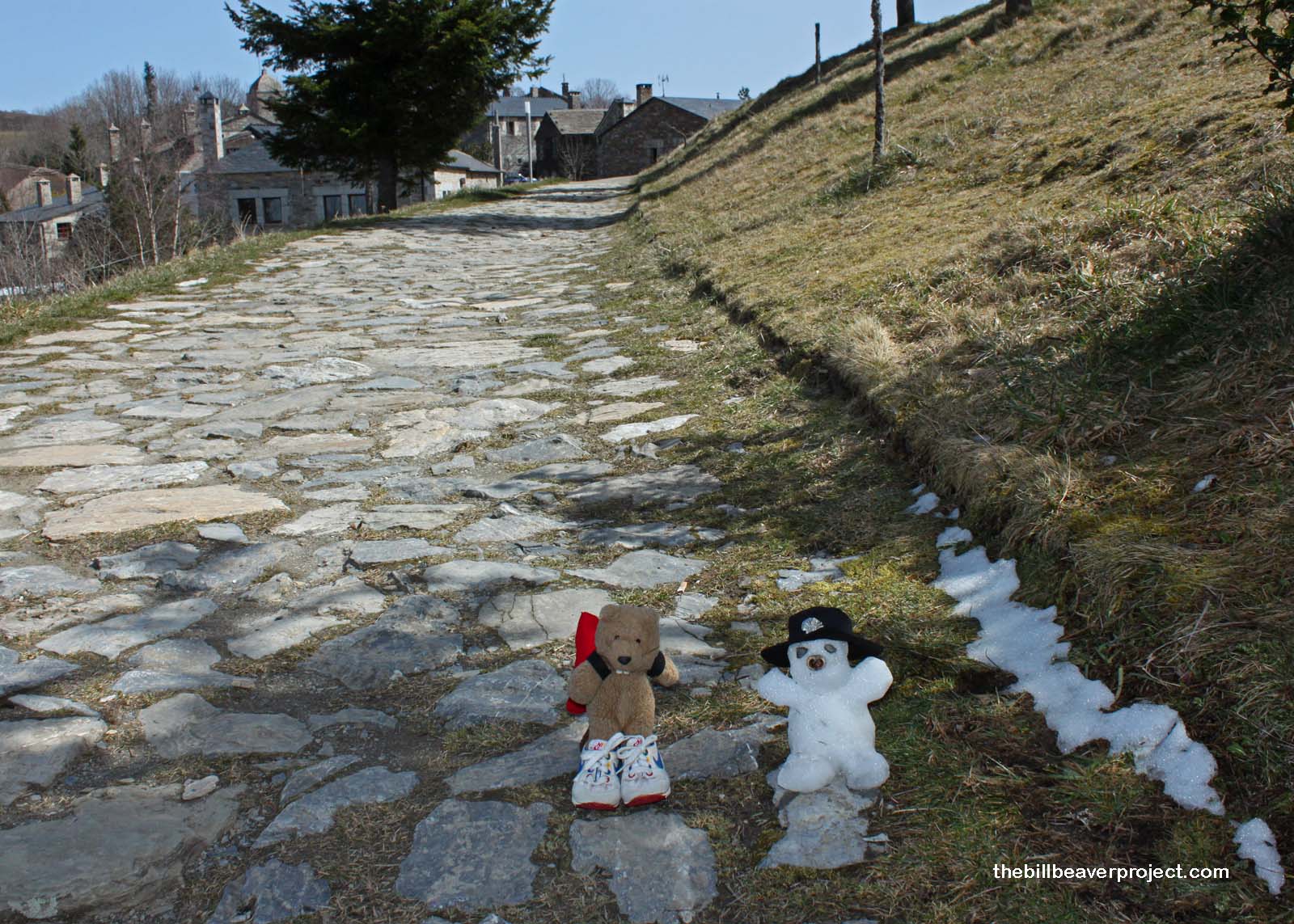 |
When in doubt, play in the snow! There wasn’t much in O Cebreiro, but since this was the last time I’d get to see Spanish nieve, I had to make the most of it. I built a snowbeaver with two pebble eyes and a walnut shell nose and gave him my hat. That brought him to life! The snowbeaver introduced himself as Señor Castorieti and was so excited to hear about my world travels, he decided, right then and there, to see the world too! Before I could stop him, he marched right out of the shade, and well, it was a warm afternoon. Poor Señor Castorieti…
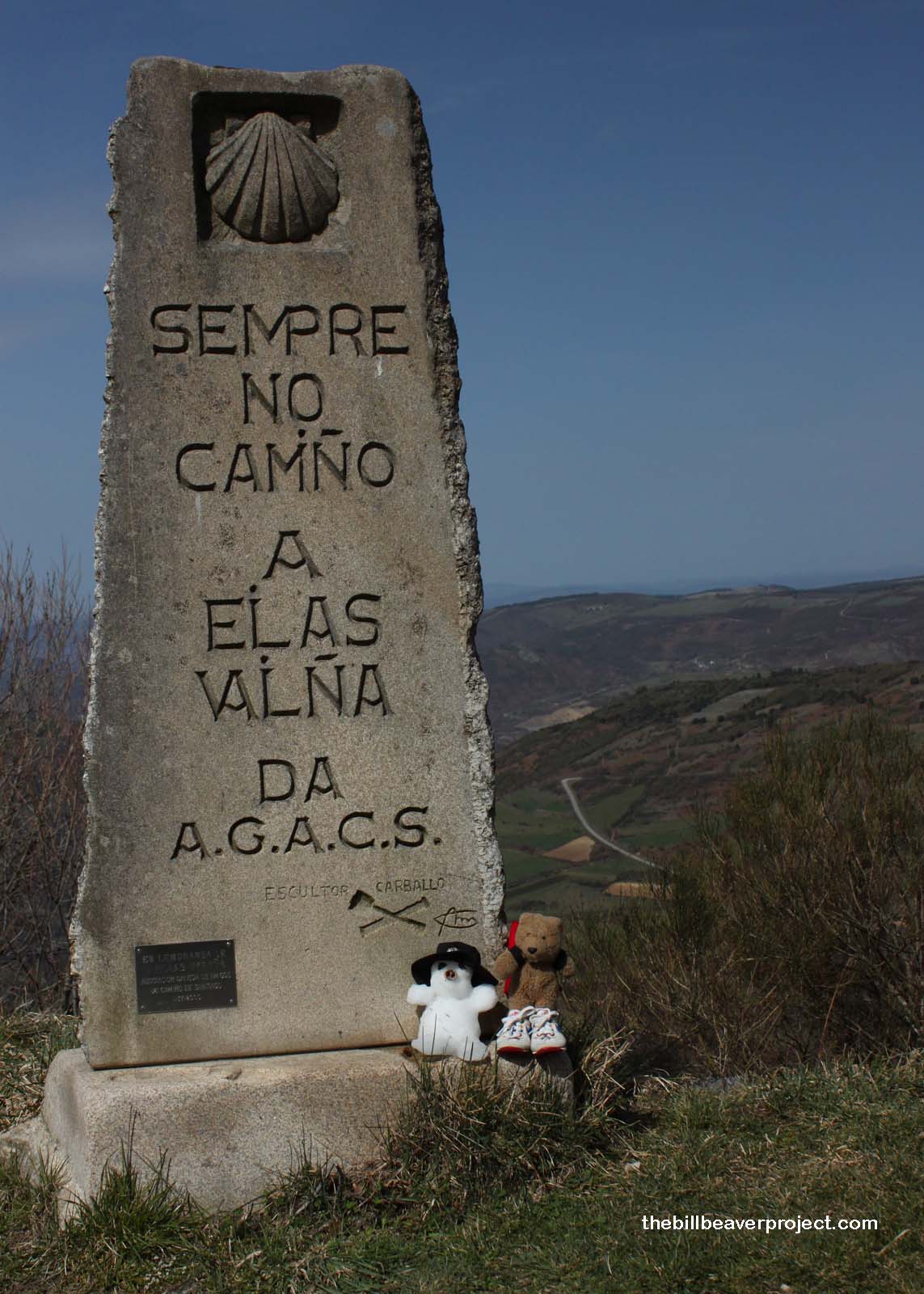 |
The loss of Señor Castorieti inspired me to leave O Cebreiro. The Camino turned downward, slightly easier than the uphill, but in the afternoon, 12K is still 12K! At least the farmland I could now see on all sides had real, live cows in them! Compared to the empty Meseta, Galicia appears to be full of life! I think I’ve just found my new favorite part of the Camino!
Around Liñares, I caught the first sounds of Galego, off in the distance. I was surprised to hear that it has a lilt to it, sort of like Italian! I kind of wish I’d had more exposure to it so I could participate, but at least I learned the most important word: graciñas, which means “Thanks!”
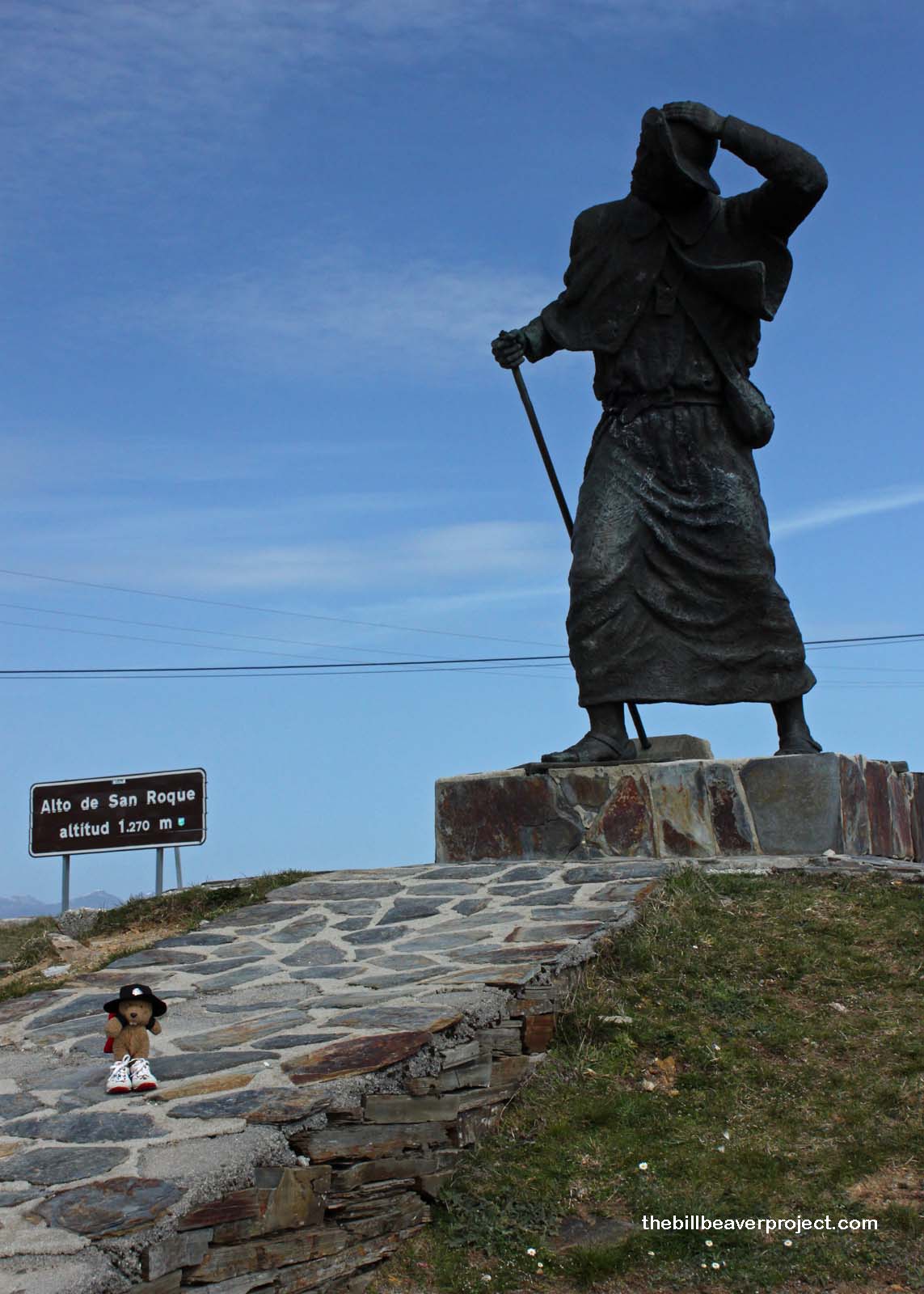 |
I rested at the Alto de San Roque, where a dramatic peregrino statue fought through much worse weather than I had. This was far from my expectation of Galicia, which I’d heard was the wettest part of the Camino! Instead, I sat in the sunshine at the peregrino’s feet and took in a spectacular view, a much needed pause in the quiet.
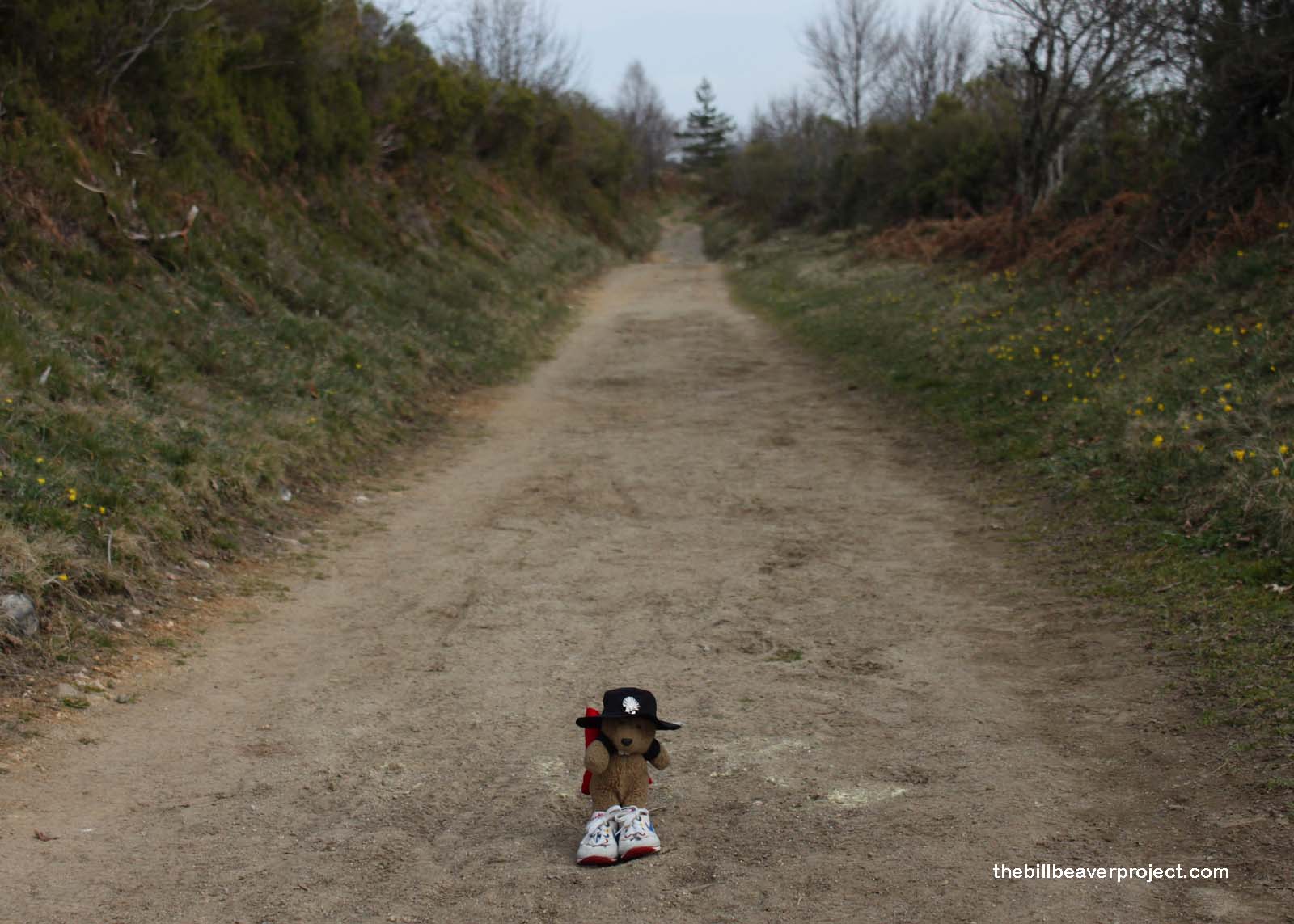 |
That pause proved very important, because my guide did not tell me how far I would have to keep walking. After meeting a curmudgeonly hospitalera in a rundown albergue in Alto de Poio, I decided to keep walking. Not knowing exactly how far I had to go, I felt suddenly uneasy that I would have to walk an additional 12K to Triacastela. That was not what I wanted to hear from my brain at this time of day! The hills here also managed to hide towns better than the Meseta, so I walked the next hour in a constant state of “It’s just around that hill!”
 |
I’d been exhausted in Alto de Poio. Now, I was 3/4 undead! I hobbled into a tiny town with streets paved in cow poop, wondering if I would have to spend the night on the ground, when suddenly, the Albergue de Reboleira appeared! I’d made it to Fonfría! Run by a family from the Dominican Republic, this island-themed albergue was the best thing to see at the end of the day! Here, I ran into Gonzalo again and met a Canadian expat named Steven, who lives in Scotland but finds it too depressing. Now he’s scoping out other places to live in the world!
While Gonzalo spent quite a while outside on the phone, Stephen and I shared a huge bowl of caldo gallego! I could have gone for a swim in this bowl! During dinner, he told me a lot about overcoming the thinking mind, being present, and abandoning technique, which I thought was kind of funny. Beavers are normally very good at living in the present, since our days are driven by survival. I’ve spent so much time around humans that I think I’ve lost sight of the beaver way! Does that mean I’m becoming more human than beaver? That’s a strange thought to take to bed to the tune of Gonzalo’s snore-o-meter.
Buen Camino!

 Previous Day |
Total Distance Walked 620.7 km (379.4 mi) |
 Next Day |
